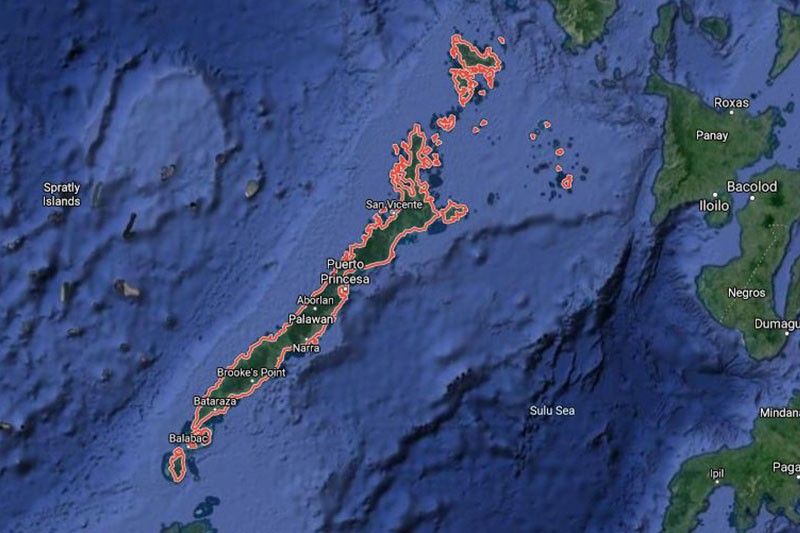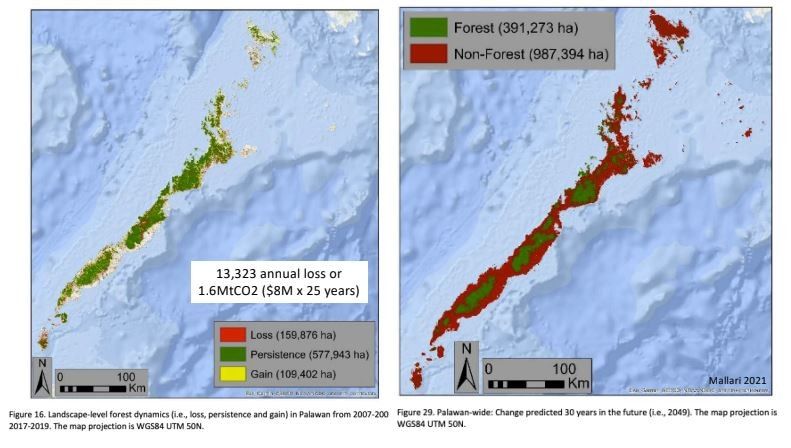Breaking up of Palawan seen to threaten the province's ecosystem

MANILA, Philippines — The plan to divide Palawan—the country’s “last ecological frontier”—into three smaller provinces will mean huge economic costs for residents and aggravate the threats and challenges to the environment, groups opposing the move said Tuesday.
In 2019, President Rodrigo Duterte signed Republic Act 11259, which divides Palawan into the provinces of Palawan del Norte, Palawan Oriental and Palawan del Sur. For the new provinces to be established, majority of the voters in the affected areas have to approve the plebiscite scheduled on March 13.
Lawyer Gerthie Anda of the civic group Save Palawan Movement said the division of Palawan will pose threats to the environment and the culture of the people.
“The division of Palawan is a political agenda. This is costly. This is dangerous to the environment and culture. This was not studied and there was no consultation that is fair and sufficient,” Anda said in a forum organized by Oceana Philippines.
‘Last nail in the coffin’
Palawan is the largest province in the Philippines, encompassing 1,780 islands and islets. It is endowed with rich natural resources and highly diverse flora and fauna.
According to UNESCO, it has 105 out of the 475 threatened species in the Philippines. Of these threatened species, 67 are endemic to the Philippines.
Dr. Neil Aldrin Mallari, president of the Center for Conservation Innovations, said there is a “big mismatch” between conservation requirements of key threatened endemic species in Palawan and the policies in place protecting biodiversity and ecosystem services.
He also pointed out that the province is losing 13,323 hectares of forests annually, which is equivalent to “about 300 SM Malls of Asia”
“In 2049, in 30 years, what will be left are the 'taraw' and mountaintops. The remaining low-lying areas, meanwhile, will be flooded or will be dried out,” Mallari said in Filipino.

“In the next 30 years, if it’s still business as usual, the division of Palawan into provinces will be the last nail in the coffin that will just accelerate the scenario. So it means that if it happens, more than half of Palawan’s unique biodiversity would have been extinct in the next 30 years,” he added.
The plan also poses challenges to the management of the province’s diverse ecosystem.
“Environmental governance is a cross cutting theme and the biggest challenge so far is the division of the province into three,” Anda said.
In a statement last week, the Episcopal Commission on Social Action, Justice and Peace of the Catholic Bishops' Conference of the Philippines called to re-examine the scientific, cultural and moral foundations of the law above all economic and political gains of the proponents and their business allies.
Fr. Rey Aguata, the apostolic administrator of the Apostolic Vicariate of Taytay, also said the “separation will only be putting Palaweños, especially the indigenous communities further from the doors of government service... and not to pave the way for genuine human development."
- Latest
- Trending





























